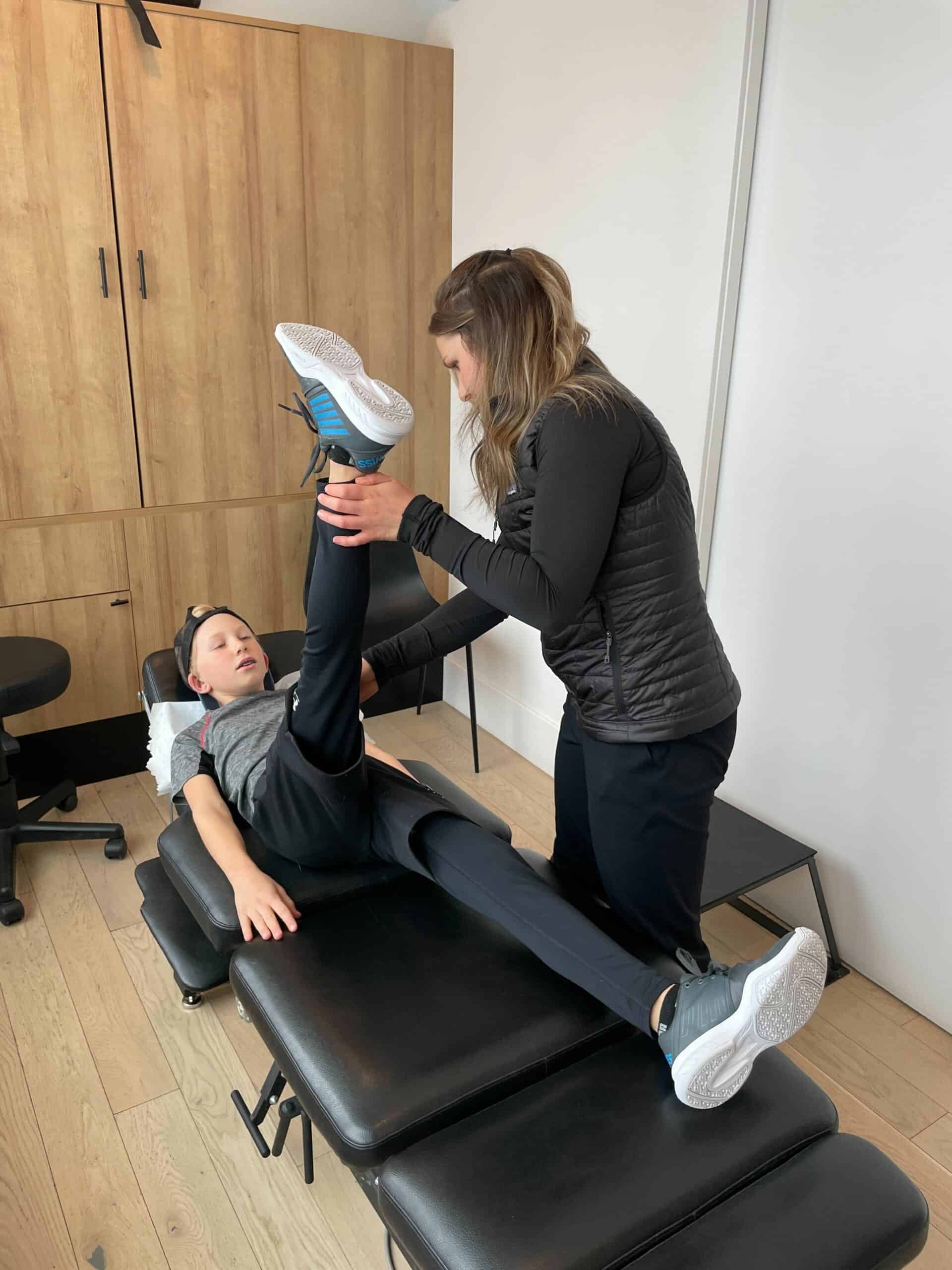Dr. Sarah originally wrote this article for “Neighbours on the Hill” Dec 2022 issue.
An estimated half million youth play hockey in Canada. It’s known to be skillful and competitive sport from an early age. Unfortunately, it’s also known to be a sport with high risk for injury.
As players develop size, strength and speed, the competition level increases, and injury prevalence follows. Hockey Alberta’s research has identified ligament sprains, concussions, and contusions as the most common injuries seen in youth hockey, with shoulders and knees being most affected areas of injury.

Statistics show most injuries take place during the third period when athletes are fatigued, and competition levels have intensified. This emphasizes the importance of muscle and cardiovascular endurance to ensure players have enough energy to play safely for the entire duration of the game. Strategies to reduce the risk of injury, especially concussions, include teaching on-ice awareness and body control skills, improving neck muscle strength and proprioception, and properly fueling the body with adequate nutrients for performance and recovery.
Injuries are a reality for any sport, regardless of competition level. However properly preparing for the demands of your sport can significantly reduce one’s risk levels.
Injuries are a reality for any sport, regardless of competition level. However properly preparing for the demands of your sport can significantly reduce one’s risk levels. The team at Ascent Health & Sport Therapy works with athletes from all sporting backgrounds to build injury resilience and recover faster when injuries do occur. A rehab session at Ascent might include:
- Injury-specific exercise prescription
- Accurate and timely diagnosis of injury
- Manual therapy (soft tissue therapy and release, adjustments, joint mobilizations)
- Education on activity and/or technique modifications
- Therapeutic modalities (acupuncture, shockwave, IFC, taping, and more)
- Concussion management
- Return to sport assessment



Those not currently experiencing pain/injury can still benefit from care to build injury resilience. Particularly for the younger athlete, being coached in proper biomechanics and movement patterns (when uninjured) becomes the foundation to eventually build from, i.e. sprint and jump training and strength training as an athletes maturity allows for it.
By improving an athletes movement quality and building capacity beyond the demand of sport, the likelihood of being injured playing hockey can be reduced, and in the event of an injury time lost from sport may be shortened. As young hockey athletes develop, it is crucial to take proactive steps to mitigate injury and keep them competing at their best.
For further questions or inquiries about whether you or your youth athlete would benefit from treatment, contact us at Ascent 403-764-1200.

In addition to her practice at Ascent, Dr. Sarah Wheeler currently works as the team Trainer within the Calgary Buffaloes Hockey Association. She has experience both on and off the ice working with athletes to keep them in the game.
